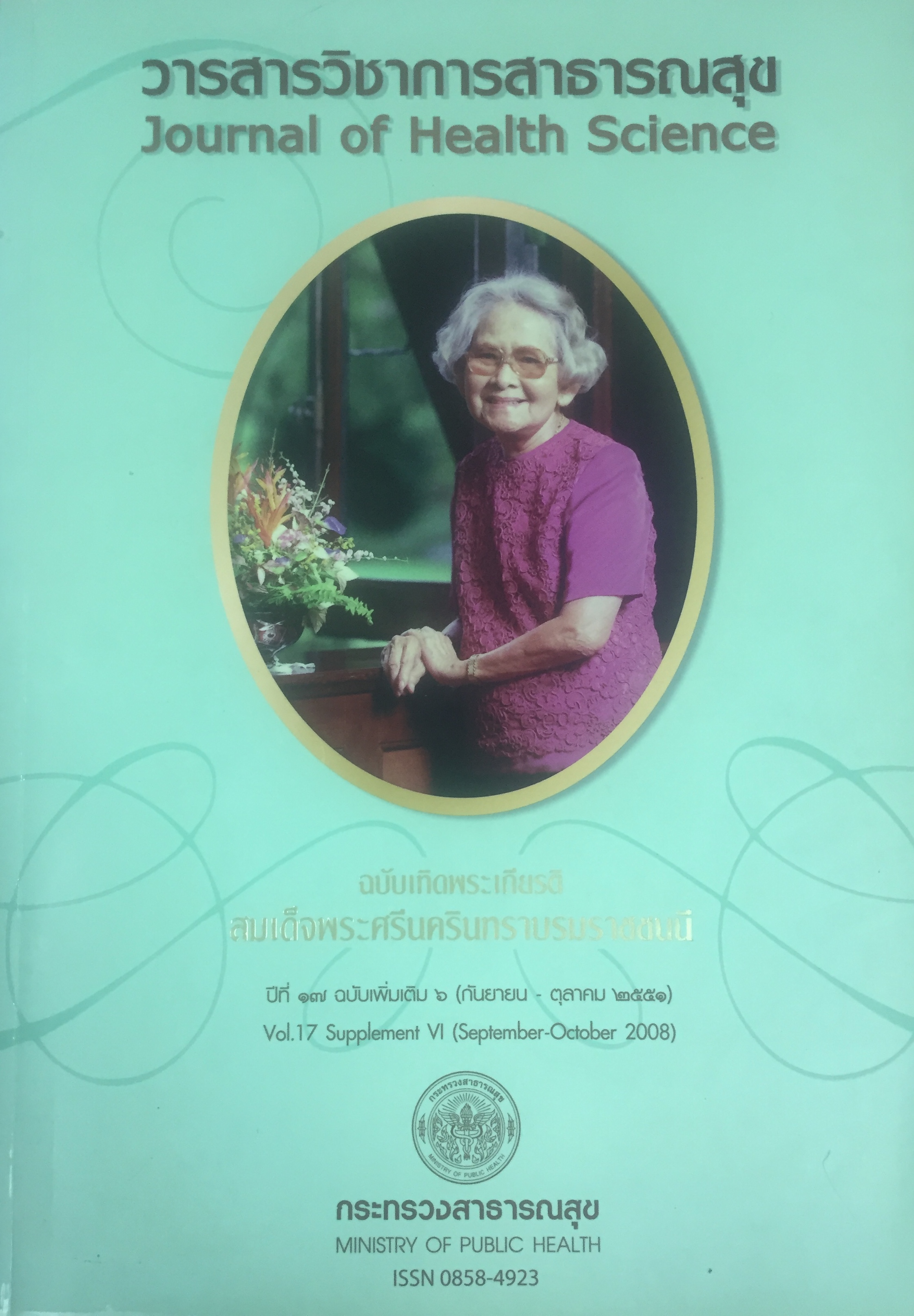Patients’ Final Visual Outcomes of Open Globe Injury Treatments in Maha Sarakham Hospital
Keywords:
open globe injury, final visual outcomeAbstract
This study dealt with patients’ visual outcomes of open globe injury treatments. The patients with open globe injury of various causes were treated in Maha-Sarakham Hospital during 1998-2007. The purpose of the study was to analyze the correlations of final visual outcome and type, zone, and initial visual acuity. The data obtained from medical records of 210 patients were classified into 3 types of wounds: rupture wounds; penetrating wounds; and penetrating wounds with intraocular foreign body. Meanwhile, the wounds were classified into 3 zones based on the location of the wounds: zone I (cornea); zone II (corneoscleral limbus to a point 5 mm posterior into sclera); and zone III (posterior to the anterior 5 mm of sclera). Based on initial visual acuity, the wounds were also classified into 5 levels, in the same way as final visual acuity. The visual acuity ranged, according to the ability to visualize, from visual acuity better than 20/40 to blurred and to NPL (no light perception). The analysis employed frequency, percentage, and multiple regression analysis. It was found that the 210 patients had 212 eye injuries. The main type was penetrating wound (70.4%). The location was mainly in zone I (76.2%). The majority of cases (49.5%) had initial visual acuity in the range of 19/100-5/200. When the type and the location were jointly analyzed with final visual acuity, the analysis revealed that the final visual outcome was significantly correlated with type, zone, and initial visual acuity.
Downloads
Downloads
Published
How to Cite
Issue
Section
License
Copyright (c) 2018 Journal of Health Science

This work is licensed under a Creative Commons Attribution-NonCommercial-NoDerivatives 4.0 International License.







